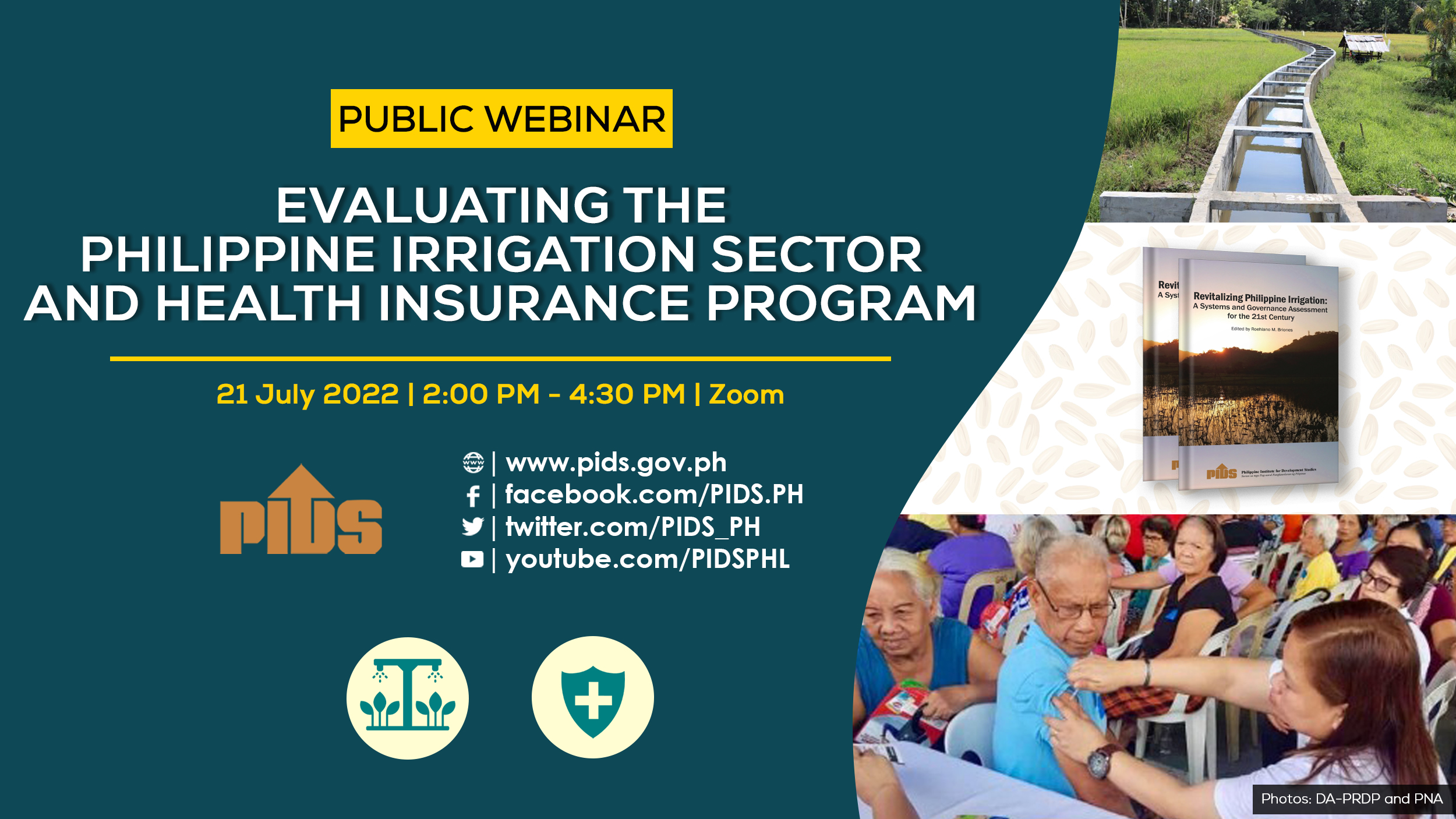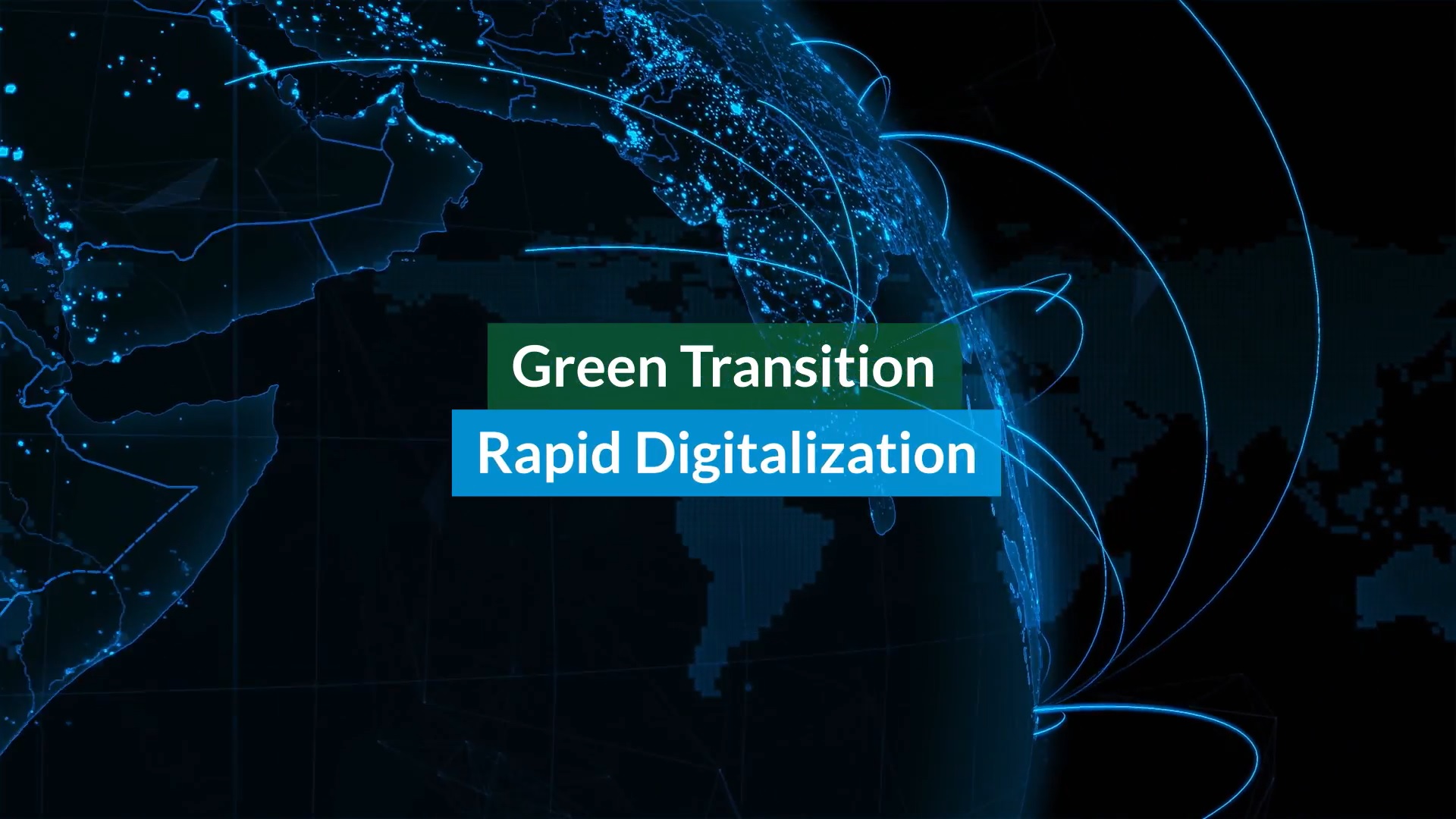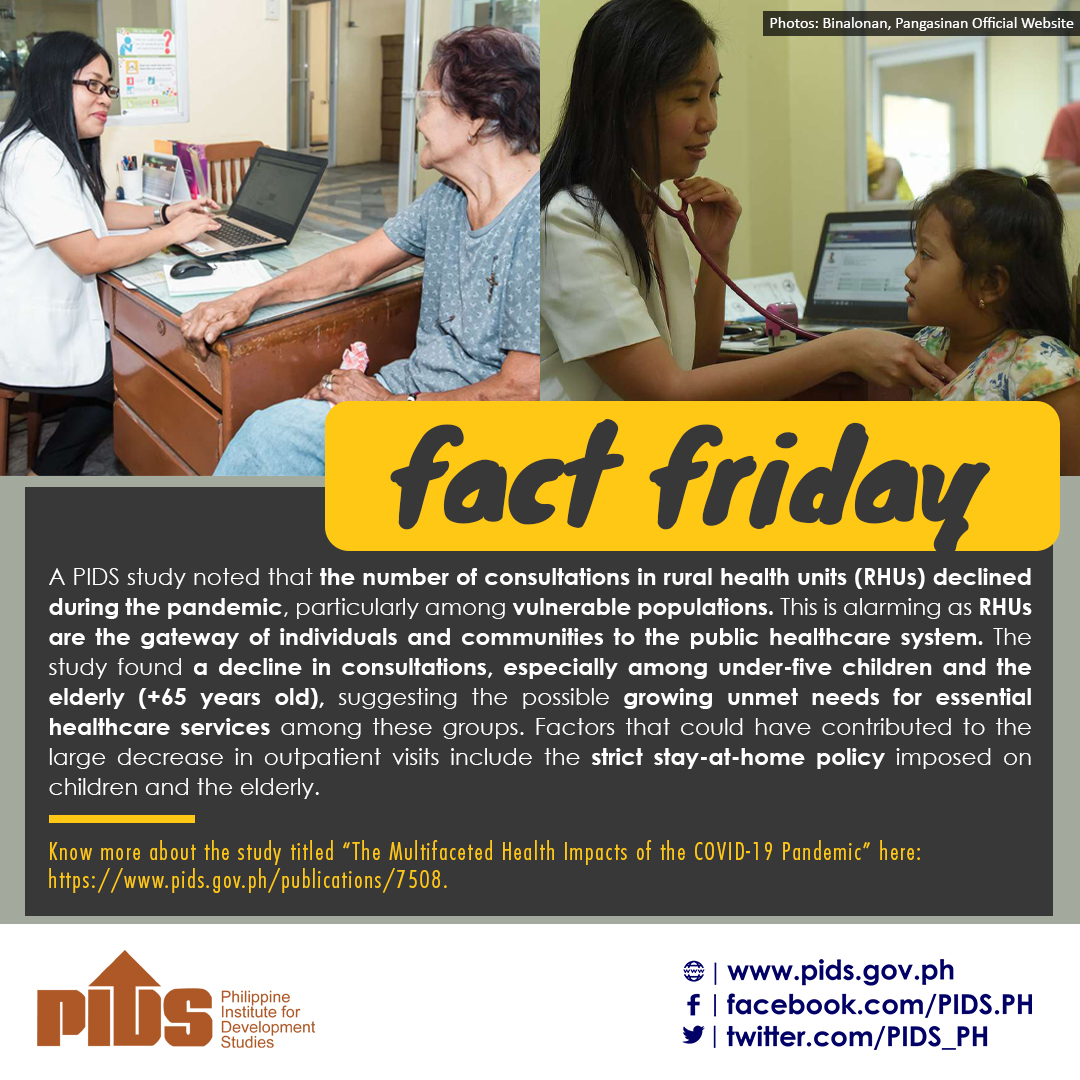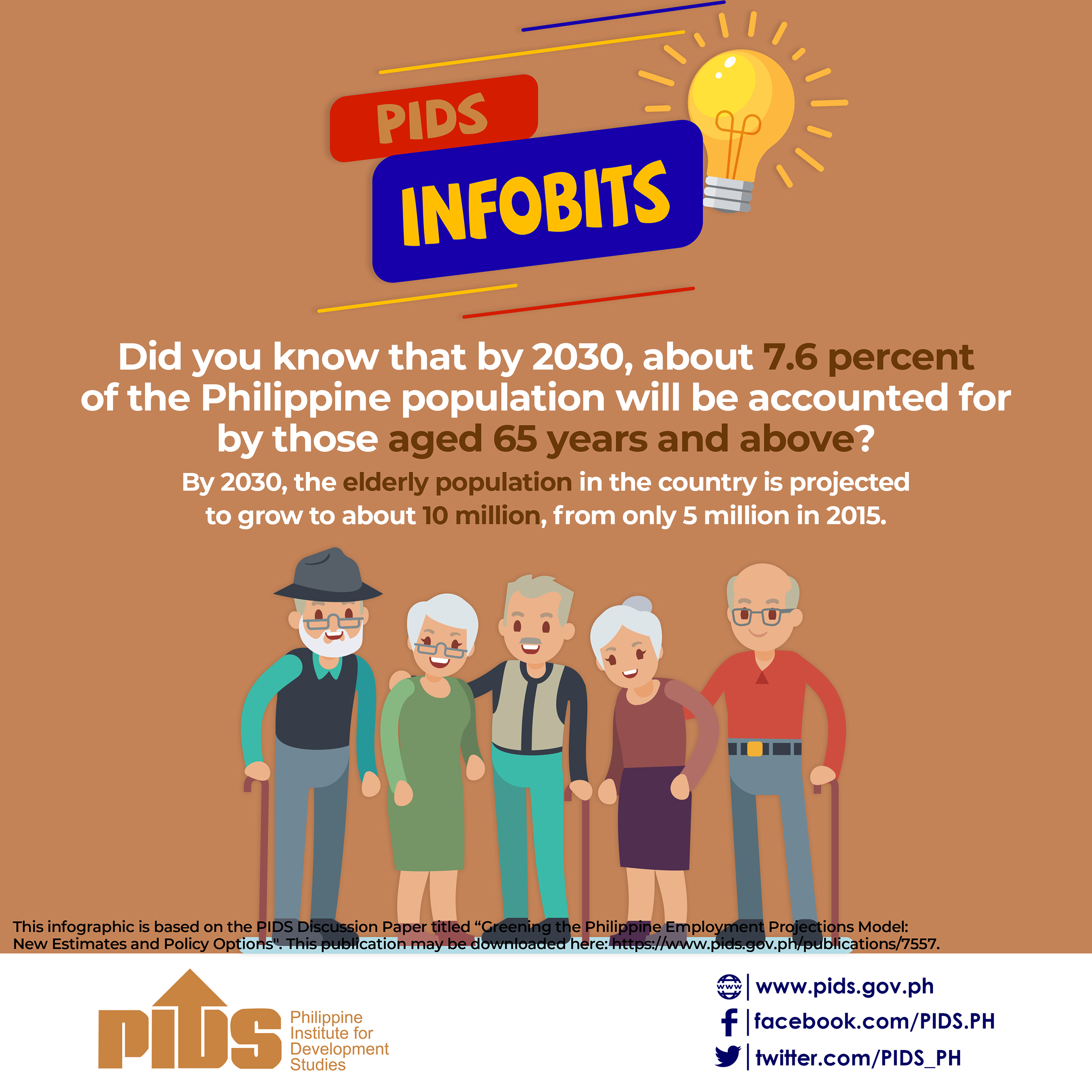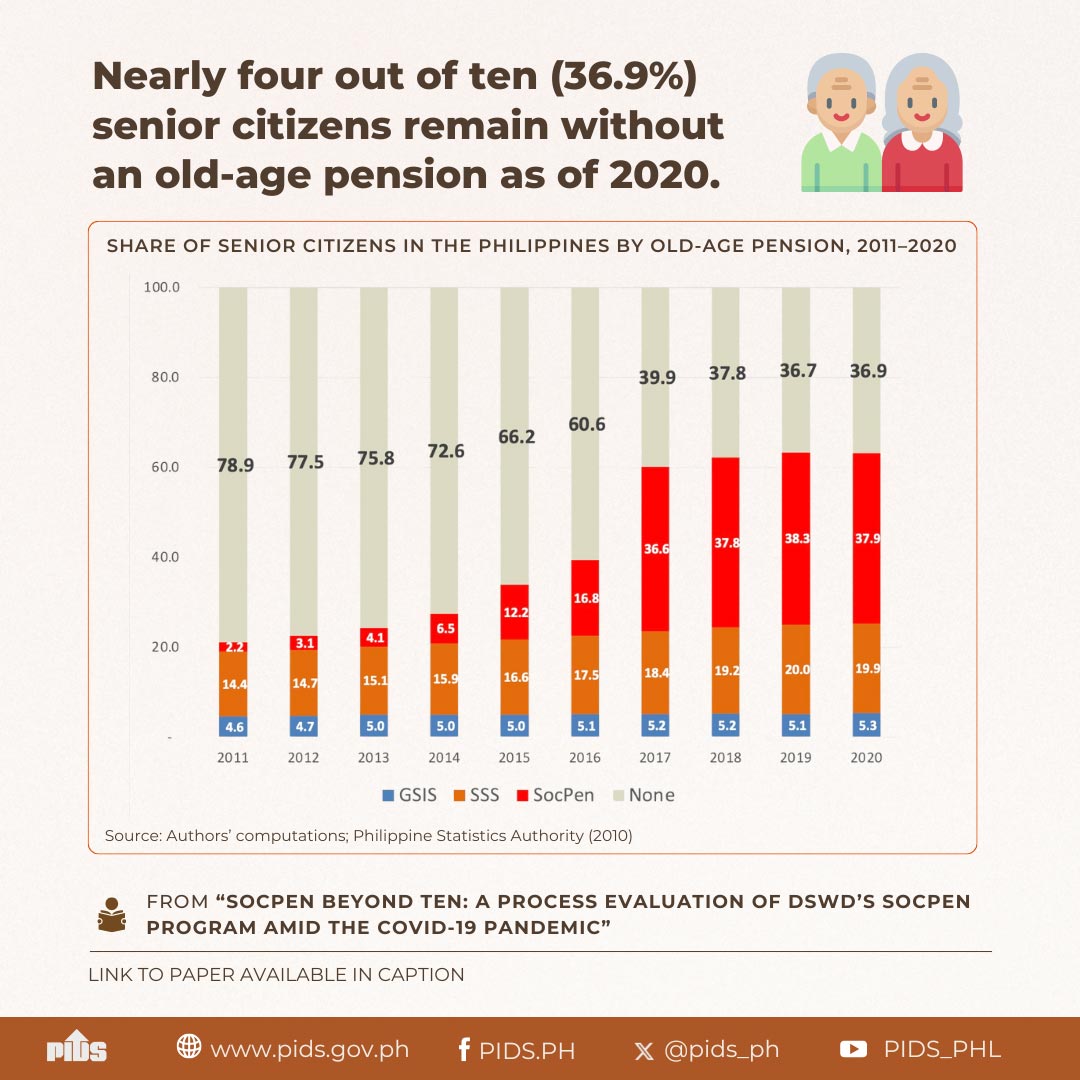THE poorest senior citizens should receive more under the country’s monthly social pension for the elderly in order to lift them up from poverty, according to the Philippine Institute for Development Studies (PIDS).
In a Policy Note, PIDS consultant and associate professor at the Pamantasan ng Lungsod ng Maynila Jennifer D. Monje said the poorest lolo or lola should get P1,000-worth monthly pensions from the government from the current P500 a month stipend.
Monje said these recommendations were based on a study made by PIDS Senior Research Fellow Jose Ramon G. Albert. She added this is just one of several proposed changes to improve the social pension for senior citizens nationwide.
“Providing the indigent elderly with a monthly allowance is a good response to improving the plight of seniors among the poor and vulnerable. Thus, this program is viewed positively by program implementers and senior citizens alike,” Monje said.
“However, the program is not without issues and challenges. Some strategic policy actions are urgently needed to address implementation deficits,” she added.
Monje said Albert’s recommendation proposed that the monthly assistance of P500 could be given to those low-income but not poor elderly or those with incomes between the poverty line and twice the poverty line.
Albert also proposed a social pension of P750 a month to be given to poor but not subsistence poor seniors or those with incomes between the subsistence poverty threshold and the poverty line.
The elderly who are among the subsistence poor should receive the largest social pension of P1,000 a month. Subsistence incidence in poverty is the proportion of the population who could not provide for their basic food needs.
“Senior citizens expressed their gratitude for the program. While they admit that P500 per month is inadequate for food and medicines, they note that it is better than nothing—‘mabuti na kaysa sa wala.’ They also look forward to pending legislation seeking to double the pensions,” Monje said.
Apart from the amount of the social pension, Monje said the government should also address the distribution of the cash assistance to the elderly. She said it is important to tap other banks, including private banks to provide the funds to seniors.
For seniors who have access to technology and who live near city centers, it is an option to provide their pension through e-payments and e-wallets while those who do not have access to technology and living in remote areas should receive their pensions through a door-to-door system.
Data showed that under the current system, it takes the government 175 days to disburse the funds and conduct the entire program implementation. This is equivalent to 8-months’ work for what should be done in six months.
Apart from this, Monje said there is a need to standardize and streamline the application process for the social pension to three steps: submission of application forms and other relevant documents; interviewing potential pensioners and independently determining the veracity of submitted data; and, providing feedback to applicants.
More often than not, Monje said, the last step is skipped by the government. Part of this reason is that there is not enough manpower to handle the social pension for the elderly.
Seniors, who are already part of the social pension program, said the applications and payouts are facilitated by daycare workers who also double as Department of Social Welfare and Development (DSWD) special disbursing officers (SDOs).
Meanwhile, based on the average budget allocation and disbursement and average number of indigent elderly served based on age requirement, a total of 2.96 million seniors aged 60 years old and older received pensions between 2016 and 2020.
They received a total of P16.06 billion during this time. This is 87.82 percent of the total average budget allocation worth P18.29 billion for the social pension during the period.
The budget for the Social Pension for Indigent Senior Citizens (SPISC) program was given a budget of P23 billion for fiscal year 2021, given to a total of 3.7 million beneficiaries receiving noncontributory old-age pensions from the government.
In 2021, Monje said, the total SocPen beneficiaries account for nearly half or 46.2 percent of the senior citizen population.







